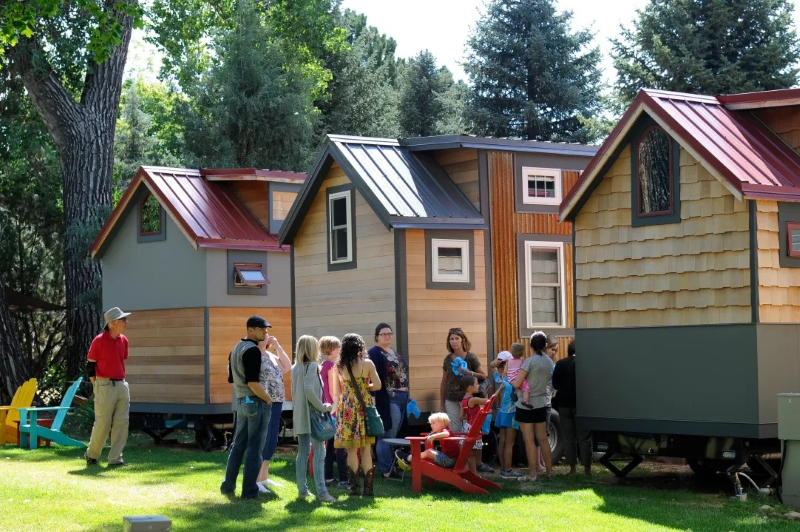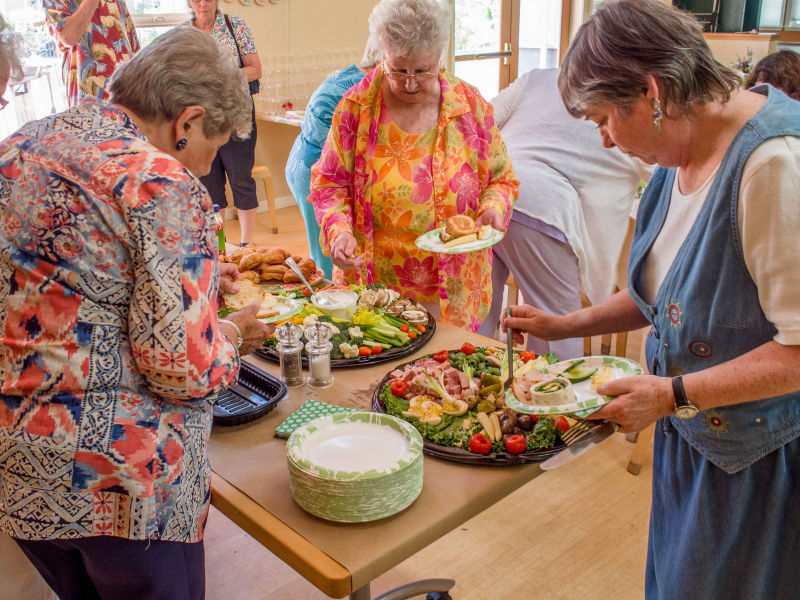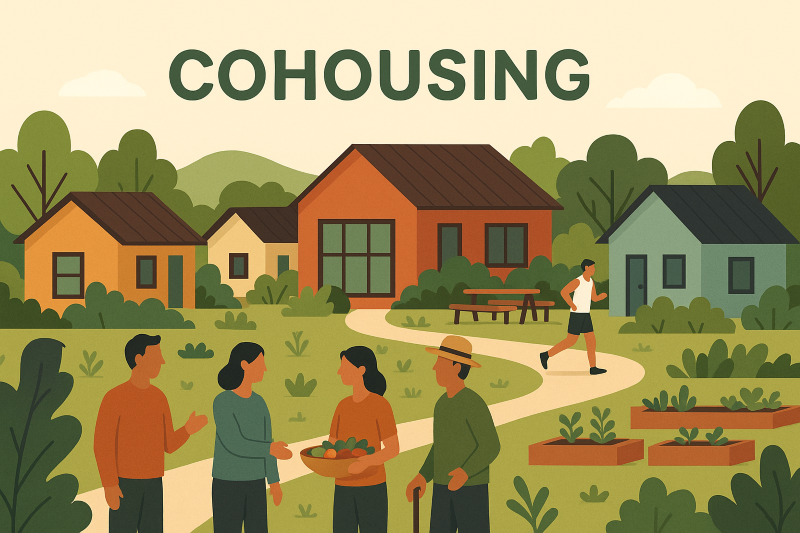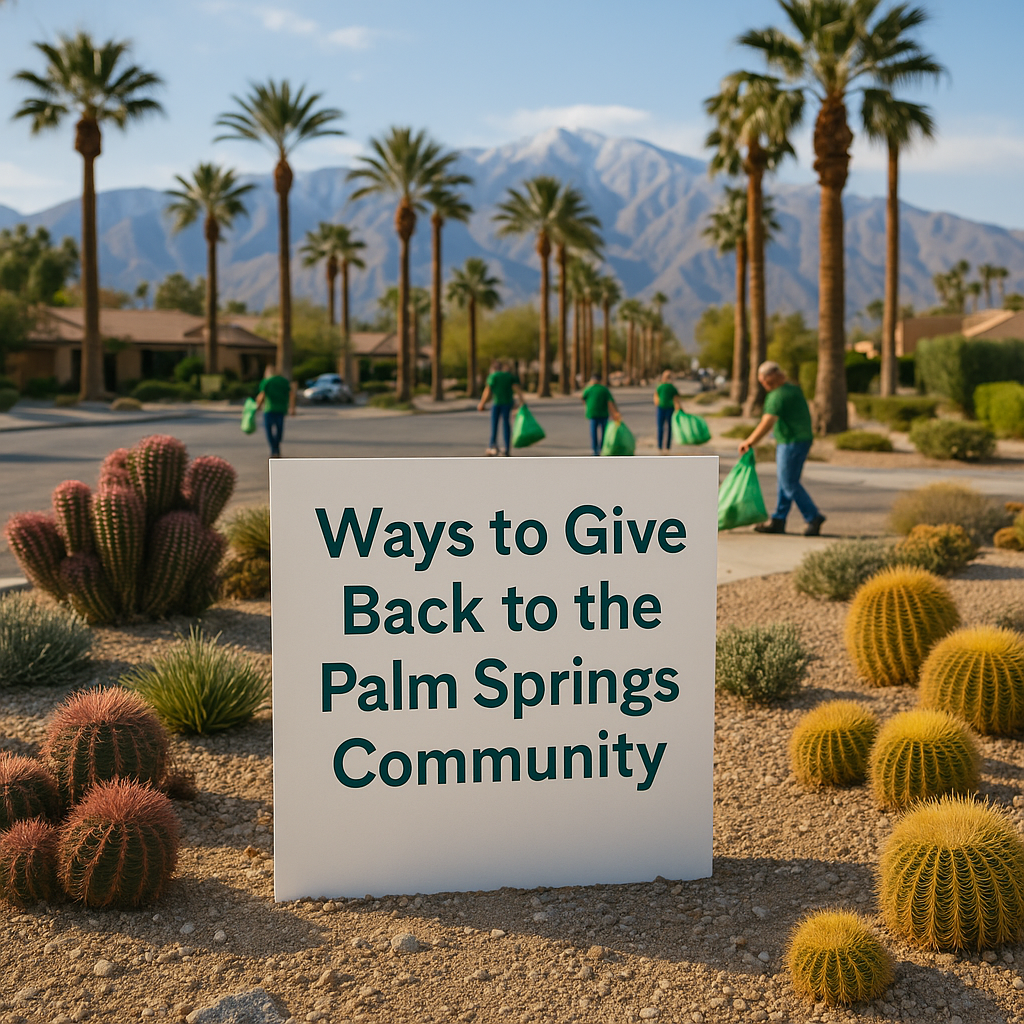Is Co-Housing the Next Big Thing? Exploring a 20–30 Person Tiny-Home Community in the Desert
One of the questions I hear all the time from clients and friends—especially as we get older—is: “Wouldn’t it be great if a group of us could build a small community where we could all live together and age in place?” For many of us who are single, coupled without children, part of the LGBTQ+ community, or simply without a large family network, the idea of having people nearby who check in, share meals, and look out for each other has become more than a dream. It’s a growing need.
There are over 100 cohousing developments currently in progress across the United States, but I’ve found that many of them are prohibitively expensive, with some homes costing over $700,000. Palm Springs recently saw the launch of a new LGBTQ+ senior community—but monthly costs can run over $5,000 for a single apartment. That simply doesn’t work for most people I talk to.
Having spent years developing and marketing small-home and tiny-home communities, I keep coming back to the same idea: What if we could create a cohousing model that’s actually affordable? A place that’s intentional, community-oriented, architecturally thoughtful, and accessible to the people who need it most.
Your feedback will help determine whether this is something worth pursuing—and if so, what it should look like.

Thanks for taking this survey about a new co-housing community in southern California....
If you’ve ever dreamed of simplifying your life, living with purpose, and being part of a supportive community, you’re not alone. Across the country—especially in lifestyle-forward places like Palm Springs—more people are asking the same question:What if home could feel more like a village again?
Co-housing communities, where residents live in their own homes but share responsibilities, amenities, and social spaces, are becoming increasingly popular. And one concept gaining attention is a village of tiny homes designed for 20–30 residents who value connection as much as independence. Could this work in the Palm Springs area?
So let’s explore the idea… and see what you think.
What Is Co-Housing, Exactly?
Co-housing blends privacy with community. Residents maintain their own fully independent home—think a modern, efficient tiny home around 300–600 sq ft—but participate in shared:
- Outdoor spaces
- Gardens and orchards
- Kitchens or cooking nights
- Workshops
- Storage or tool sheds
- Fitness or wellness spaces
- Guest casitas
- Community events and responsibilities
It is not a commune. No one shares income or gives up autonomy. Instead, residents collaborate on decisions, upkeep, and activities—much like a friendly micro-neighborhood built with intention.

Why Tiny Homes + Co-Housing Works So Well
Tiny homes aren’t just a trend. They create:
1. Affordability & Stability
Lower cost of construction and lower utility use mean home ownership becomes accessible—with the added benefit of splitting shared amenities among the group.
2. Sustainability
Shared resources, smaller footprints, solar, and efficient water management make a community like this significantly eco-friendlier than traditional development.
3. Built-In Social Support
Imagine having neighbors who actually know you. Who share interests—gardening, cooking, woodworking, hiking, wellness, art.You get privacy when you need it and connection when you want it.
4. Aging-Friendly Living
For many, the idea of growing older surrounded by trusted neighbors feels safer and more comforting than isolated single-family homes.
A Possible Vision: The Desert Tiny Home Village
Picture this:
- 20–30 architecturally thoughtful tiny homes arranged around shared courtyards
- A common house with a chef’s kitchen, dining room, coworking space, library, and media lounge
- A workshop or maker space
- A community pool
- Desert-native landscaping and pollinator gardens
- Walking paths, fire pits, and designated quiet zones
- A dog park (of course)
- Shared EV chargers & solar energy
- Guest suites for friends and family
A place that feels like a retreat… yet deeply grounded in community.

**Would You Be Interested in Living Like This?
Let’s Test the Waters.**
I’m exploring the idea of developing (or helping develop) a co-housing tiny-home community here in Southern California or Oregon. Before going any further, I’d love to hear your thoughts. Here's a short survey that will help us determine interest and give us an idea of what people would be looking for in a tiny house Co-housing community:

Thanks for taking this survey about a new co-housing community in southern California....
Would you ever consider living in a co-housing community with 20–30 others?
If yes—
What would you want included?
Some possibilities people have mentioned:
- A pool or spa
- Communal gardens
- Group meals or optional shared cooking nights
- Art studio or maker space
- Meditation or yoga area
- Walking paths
- Shared kitchen + dining hall
- Storage areas
- Guest house
- Car-share or bike-share options
- On-site wellness services
- A governance model people actually enjoy participating in
Or, even better—what would make you say “Yes, I want to live here”?
The Big Question
Is modern co-housing—especially tiny-home-based co-housing—appealing, or does it feel too communal for your taste?
I’m genuinely curious, and your feedback will help shape whether this idea becomes a real project.
If this kind of lifestyle sparks your imagination (or if you’re already familiar with co-housing), leave a comment or message me directly.Your input might just be the start of something new for our community.

Thanks for taking this survey about a new co-housing community in southern California....
Cohousing Resources & Communities
What Is Cohousing? (Learn More)
- Cohousing Association of the United States (CohoUS)https://www.cohousing.orgThe national hub for cohousing education, events, directories, and development resources.
- Cohousing 101: What It Is & How It Workshttps://www.cohousing.org/cohousing-overview
- Starting a Cohousing Community Guidehttps://www.cohousing.org/start
- The Commons Cohousing Podcasthttps://www.cohousing.org/podcast
West Coast Cohousing Communities
California
- Wolf Creek Lodge (Grass Valley, CA – Senior Cohousing)https://www.wolfcreeklodge.org
- Muir Commons (Davis, CA – One of the earliest U.S. cohousing communities)https://www.muircommons.org
- Temescal Commons (Oakland, CA – Urban cohousing model)https://temescalcommons.org
- Washington Commons (West Sacramento – Urban, multi-story cohousing)https://www.washington-commons.org
- La Querencia Cohousing (Fresno, CA)https://www.laquerenciacohousing.com
Oregon
- Alder Commons Cohousing (Portland, OR)https://www.aldercommons.org
- Cascadia Commons (Portland, OR)https://www.cascadiacommons.com
- CoHo Ecovillage (Corvallis, OR)https://cohoecovillage.org
- Oakleigh Meadow Cohousing (Eugene, OR)https://oakleighmeadow.org
- Whatcom Skylark Cohousing (New, growing interest list)https://www.skylarkcohousing.com
Washington State
- Capitol Hill Urban Cohousing (Seattle, WA – Innovative vertical cohousing)https://www.capitolhillurbancohousing.org
- Songaia Cohousing (Bothell, WA)https://songaia.com
- Jackson Place Cohousing (Seattle, WA)https://www.seattlecohousing.org
- Winslow Cohousing (Bainbridge Island, WA)https://www.winslowcohousing.org
- Kitsap County Cohousing (Forming community)https://www.kitsapcohousing.org
Cohousing Directories
- Full North American Cohousing Directoryhttps://www.cohousing.org/directory
- Communities Directory (Cohousing + Intentional Communities)https://www.ic.org/directory
- Forming Communities Directoryhttps://www.cohousing.org/forming
Recommended Reading
- Creating Cohousing: Building Sustainable Communities – McCamant & Durrett
- The Senior Cohousing Handbook – Charles Durrett
- Finding Community: How to Join an Ecovillage or Intentional Community – Diana Leafe Christian
Would you ever consider living in a co-housing community?
We appreciate your feedback!





